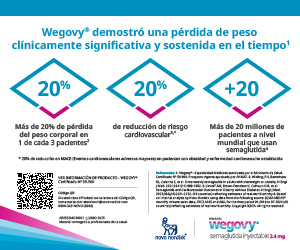Amniotic membrane dressings in the treatment of diabetic foot ulcers
Keywords:
amniotic membrane, diabetic footAbstract
Diabetic foot (DF) constitutes a complication that occurs in 19 to 34% of patients with diabetes mellitus (DM). One of the most significant challenges in the management of DF is posed by postsurgical ulcers resulting extensive tissue debridement performed during an infected DF attack. The aim of this study was to describe the average velocity of closure and wound healing time through the use of homogenized and lyophilized amniotic membrane (hAMpe) dressings for the treatment of DF ulcers in ambulatory patients. Observational, longitudinal study. Patients presenting granulation-based DF ulcers, after proper debridement, were included from08/19/2021 until 14/07/2023. hAMpe dressings placed every three days were used for the treatment of these ulcers. Sixteen patients were included.with a mean age of 52.38 (8.07) years. The analyzed lesions were postsurgical ulcers in 15 of the 16 included patients. Median ulcer size was 19.5 cm2 (6.12-36). The median ABI was 1.10 (1-1.14). The median days to healing was 96 (71-170). The median percentage closure of the surface of the lesions at 3 weeks was 41% (28.9-55.3), at 6 weeks was 68.2% (48.6-74.2), and at 12 weeks was 100% (81-100). The average closure speed was 1.04% per day (95% CI; 0.71-1.31). It was higher during the closure of the first 50% of the ulcer, 2.12% per day (95% CI; 0.16-4.09), and decreased from 50% to 25% of the ulcer size to 0.67% per day (95% CI; 0.23-1.10) and from 25% to closure to 0.47% per day (95% CI; 0.14-0.80), p<0.001. Conclusion: Velocity of wound closure was 1.04% per day and median days to healing 96. These results are difficult to compare to other studies given de higher surface of the ulcers in our sample. The development of hAMpe dressings enables patients to apply them without requiring assistance from health care teams.
References
I. Carro GV, Saurral R, Witman EL, et al. Diabetic foot attack. Pathophysiological description, clinical presentation, treatment and outcomes. Medicina (B Aires). 2020;80(5):523-530.
II. Carro GV, Saurral RN, Witman EL, et al. Clinical features and outcomes of diabetic foot in Argentina: a longitudinal multicenter study. Medicina (B Aires). 2023;83(3):428-441.
III. Hawkins B. The use of micronized dehydrated human amnion/chorion membrane allograft for the treatment of diabetic foot ulcers: a case series. Wounds 2016;28(5):152-157.
IV. Huang W, Chen Y, Wang N, Yin G, Wei C, Xu W. Effectiveness and safety of human amnion/chorion membrane therapy for diabetic foot ulcers: An updated meta-analysis of randomized clinical trials. Wound Repair Regen. 2020;28(6):739-750. doi:10.1111/wrr.12851.
Downloads
Published
Issue
Section
License
Copyright (c) 2024 on behalf of the authors. Reproduction rights: Argentine Society of Diabetes

This work is licensed under a Creative Commons Attribution-NonCommercial-NoDerivatives 4.0 International License.
Dirección Nacional de Derecho de Autor, Exp. N° 5.333.129. Instituto Nacional de la Propiedad Industrial, Marca «Revista de la Sociedad Argentina de Diabetes - Asociación Civil» N° de concesión 2.605.405 y N° de disposición 1.404/13.
La Revista de la SAD está licenciada bajo Licencia Creative Commons Atribución – No Comercial – Sin Obra Derivada 4.0 Internacional.
Por otra parte, la Revista SAD permite que los autores mantengan los derechos de autor sin restricciones.




























